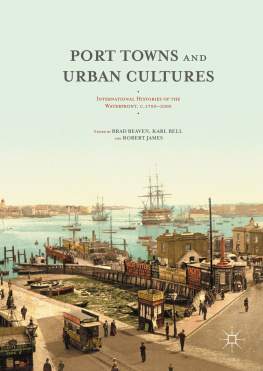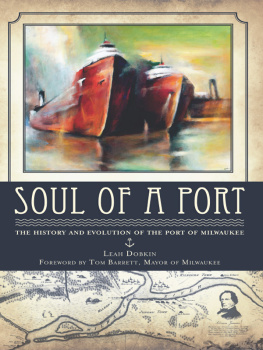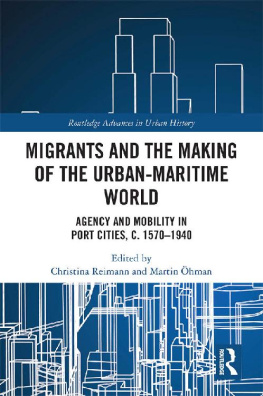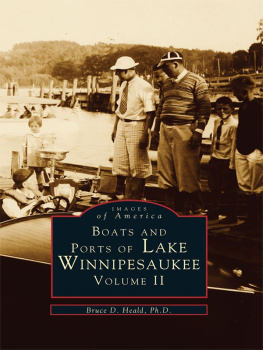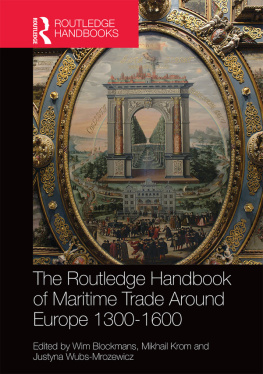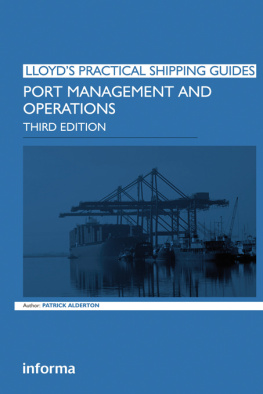1. Introduction
The cultural life of port towns has largely remained a hidden history. Ports, as liminal urban spaces where communities lived and worked, have been foreshadowed by conventional historiography that analyses these for their global trade and imperial networks.
The aim of this book, through the exploration of a series of ports from around the globe, is to advance our understanding of how the port was a crucible for the forging of distinctive urban and maritime identities. Moreover, it will examine the ports relationship with its urban hinterland together with the cultural connections that may have existed between international ports. Ports commonly shared land-based maritime districts or sailortowns that were associated with drink, sex and money lending services. Sailortowns, then, exuded otherness where visitors were confronted with a strange urban-maritime culture that was both exotic and dangerous. This book will seek to uncover the social and cultural dimension of port life and the shared maritime traditions that linked port town cultures.
In reviewing the literature on seafarers, Robert Lee has called for research to focus on the seafarers urban world as both urban and maritime historians have tended to neglect sailors familial ties and social relationships with those ashore.
Thus, the history of ports has traditionally been researched from a mercantile perspective and focussed on the connections between European and transatlantic ports through the analysis of trading routes and business ties.
This book will offer a new and challenging perspective on the port by exploring the formation of port town identities through a range of cultural forms in a variety of national settings. It will focus on the two core themes: (i) the nature of urban-maritime cultures, and (ii) representations of the port town. In doing so it highlights the ports intriguing liminal nature, located as they are at the border of land and sea. Through its broad, international focus, this book will demonstrate how port towns were open to a rich array of cultural exchanges derived from both domestic terrestrial and transnational maritime influences.
The two thematic sections are ordered chronologically. Demonstrative of the collections wide-ranging geographical and temporal scope, the chapters journey from eighteenth-century South Africa to mid- and late twentieth-century Scandinavia, by way of nineteenth- and early twentieth-century European and Antipodean port towns. They are also demonstrative of the innovative ways in which the contributors have attempted to locate and reveal the multitudinous voices, experiences, and understandings of port towns across time and around the world. The contributors draw upon a rich array of sources to facilitate this, including police and judicial records, local and regional press reports, accounts from morality campaigners and social investigators, ecclesiastical commentary, songs, maritime and urban superstitions, civic celebrations and ceremony, architectural styles, tourist guides, and the oral and written testimony of port town inhabitants. As such this collection advances multifarious models of, and approaches to, the port town as a dynamic cultural nexus. Unlike previous urban and maritime histories of ports, this book argues for the value of understanding port towns as cultural entities in their own right, shaped by their geographical locality and cultural plurality, as something more than simple nodal points in broader national and transnational economic networks.
Urban-Maritime Cultures
This first theme explores the nature and character of land-based maritime culture, its often idiosyncratic fusion of domestic and transnational influences, and the exchanges and interaction between seafarers, local landlubbers and the port hinterland. While the notion of sailors ashore still remains something of an underexamined issue in maritime historiography, the chapters in this section demonstrate a broader, more ambitious engagement with the liminality of port towns, probing the ways in which their cultures were constructed from within and without, from the influences of land and sea.
Urban-maritime cultures were not necessarily as schizophrenic as the term may first suggest. Port towns formed a cultural confluence through which flowed and churned concerns and attitudes drawn from both inland and the sea. They frequently embodied the outflow of ideas from the hinterland, acting as sites where the flotsam of contemporary anxieties relating to developing urbanisation gathered. Given their (often justified) reputation for hard drinking, prostitution, and an exuberant and excessive leisure culture, port towns often provoked an intensified fear and response from national and local authorities concerning familiar issues such as public health and immorality, particularly if they threatened commerce or naval efficiency. Yet at the same time they also drew concerns relating to the inward flow of a multitude of maritime influences, drawn from the vast, shared continents of the oceans. As points of ingress from and egress to the wider world, they were sites for facilitating the dynamic exchange of goods, services (legal and illicit), ideas, beliefs, stories, and potentially less desirable things such as epidemic diseases; they marked the transition from work to leisure, from confinement to temporary liberation, and vice versa. As places of homecoming they were locations where their land-bound communities frequently looked out to the water and dwelt upon the risks of maritime endeavours, while mariners looked to the land for its promise of safe return, comparative liberty, and pleasures often long denied.
This confluence of outward and inward dynamics energised port town localities, granting them a distinctive cultural richness and vitality. Urban-maritime cultures offer the historian an opportunity to explore where cultural influences come from, how they variously jarred or merged in specific spatial localities, and ultimately how they become part of a gestalt culture embodied within the life experiences and representative imaginings of port towns. They illustrate how maritime practices and mentalities seeped into the city and how seafarers took their land-learned cultures with them to sea. Urban-maritime cultures are sites where domestic and far-flung foreign cultures from overseas met and cross-fertilised.
A number of themes emerge from the chapters in this section. These include a persistent, underlying concern with urban anxieties and maritime otherness, tensions between the cultures within sailortowns and the broader, authoritative urban power structures in which they coexisted, and the frequently fluid nature of personal and collective identities in the waterfront city. Firstly then, port town cultures were simultaneously constructed from within and without, generating iconic representations (both positive and negative) that derived from, but also vied with, the realities of lived urban-maritime experiences. Paul Gilchrists exploration of song writing and maritime cultures in nineteenth-century Newcastle considers the shaping of social attitudes towards and representations of sailors, and the relationships between the everyday experiences of life in a port town and life at sea. Through its overview of poetry and song written by maritime workers, the chapter shows how sailors enjoyed a dual position from local versifiers, as both object of attachment and patriotism while also being subject to comic description and satire. Karl Bells chapter explores the role of religion and religiosity in shaping representations of anxieties and enacted notions of otherness in Victorian Portsmouth. It examines the ways in which the rhetoric of religious authorities and moral reformers helped construct an image of Britains premier naval town as a godless void, a place of heathen depravity. Moving within the towns community, it then considers Portmuthians and naval seamens popular religious mentalities, arguing that this fusion of Christian and superstitious beliefs and practices offered sailors and their land-based families a sense of comfort and control over anxieties about the otherness of life at sea.

